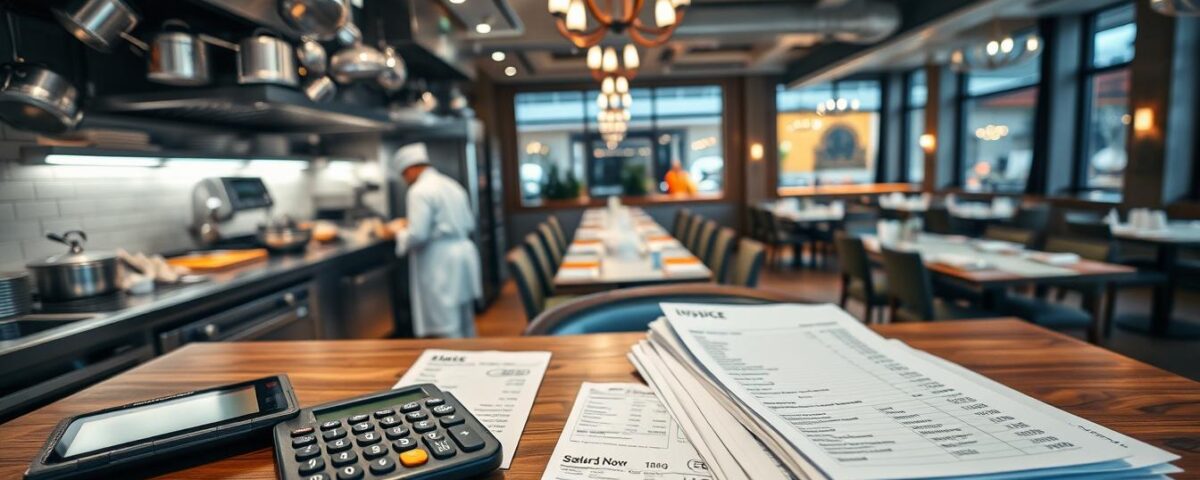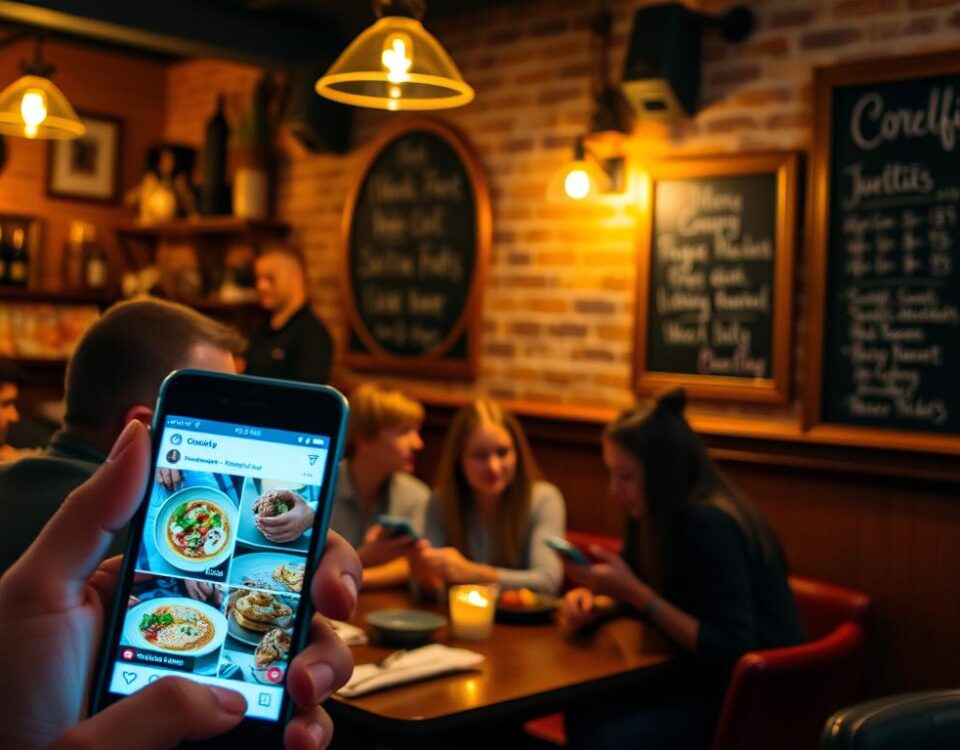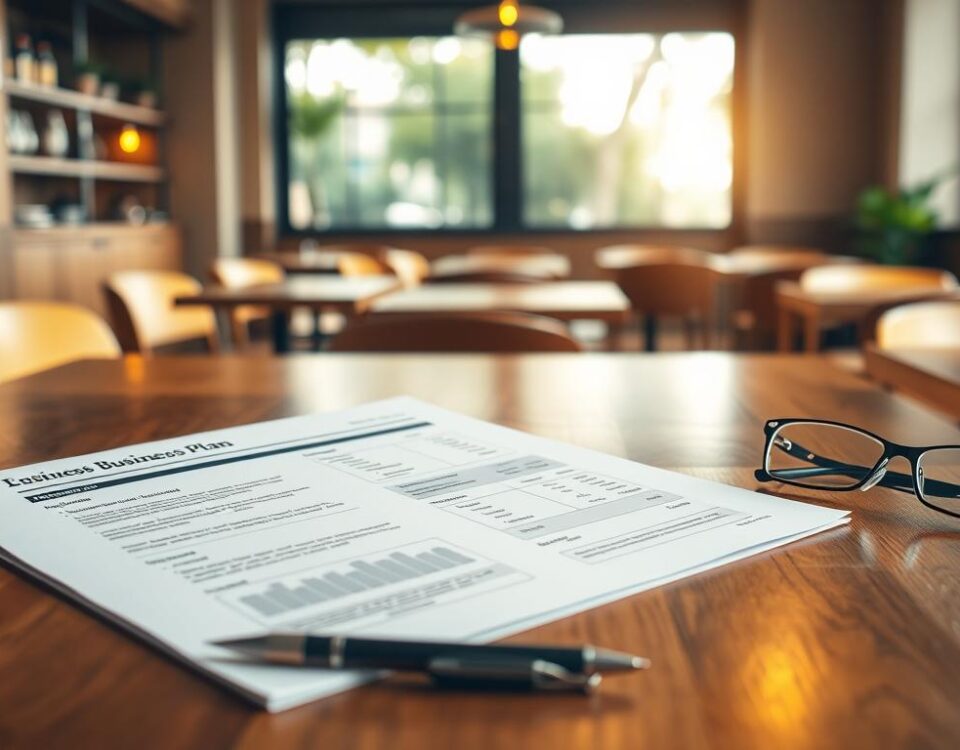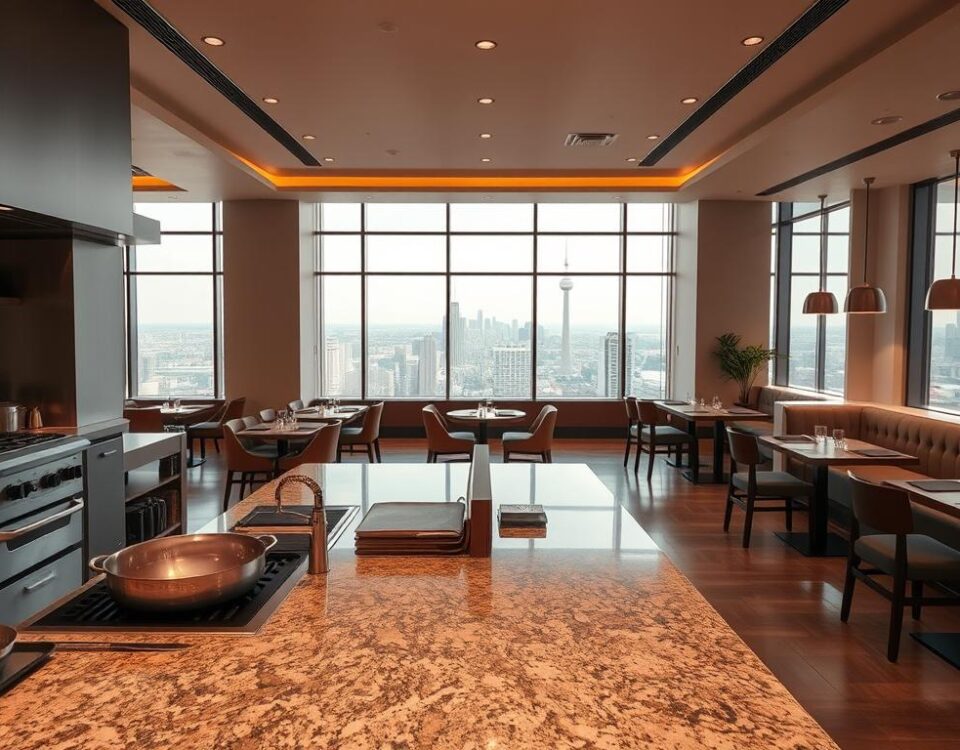
The True Cost of Restaurant Build-Out (And How to Avoid Surprises)
October 8, 2025
The Ultimate Restaurant Business Plan Template for Fast Funding
October 9, 2025When I decided to open my own restaurant, I was overwhelmed by the numerous expenses involved. From equipment and rent to staffing and marketing, the costs can quickly add up. Did you know that nearly 60% of restaurants fail within the first year due to underestimating startup costs? This staggering statistic highlights the importance of accurately calculating your startup costs before launching your venture.
To avoid this pitfall, it’s crucial to understand the three main types of expenses: initial startup costs, food costs, and overhead costs. By using my restaurant opening cost calculator, you can plan your finances more effectively and create a realistic budget that accounts for all necessary expenses.
Key Takeaways
- Understand the three main types of restaurant expenses: startup, food, and overhead costs.
- Learn how to use a restaurant opening cost calculator to plan your finances effectively.
- Create a realistic budget that accounts for all necessary expenses.
- Discover the importance of comprehensive financial planning for long-term sustainability.
- Avoid common budgeting pitfalls that can lead to restaurant failure.
Understanding Restaurant Startup Costs
Restaurant startup costs can be overwhelming, but understanding them is crucial. As I delve into the world of restaurant planning, it becomes clear that startup costs are not just about the initial investment; they’re about laying the foundation for a successful business.
The Three Main Types of Restaurant Expenses
When it comes to restaurant expenses, there are three main categories to consider: one-time startup costs, ongoing food costs, and fixed overhead costs. One-time startup costs include expenses such as location costs (buying vs. renting), renovations (painting, flooring, counter spaces, seating, lighting, decor), and kitchen equipment (large appliances, cooking equipment, bar equipment, service equipment). Ongoing food costs involve the expenses associated with menu creation and inventory management. Fixed overhead costs, on the other hand, include personnel costs (training, onboarding, external employees), marketing costs (restaurant website, paid advertisements), and technology expenses (employee scheduling software, POS system, online ordering system).
Why Calculating Costs Before Opening is Critical
Calculating costs before opening is not just about knowing how much money you need; it’s about making informed decisions on concept, menu pricing, and staffing. Proper financial planning helps prevent cash flow problems, which is one of the leading causes of restaurant failures in the first year. By understanding your startup costs, you can create realistic financial projections and set appropriate menu prices to ensure profitability. This, in turn, affects the timeline to profitability, making proper budgeting critical for long-term success.
Restaurant Opening Cost Calculator: Your Planning Tool
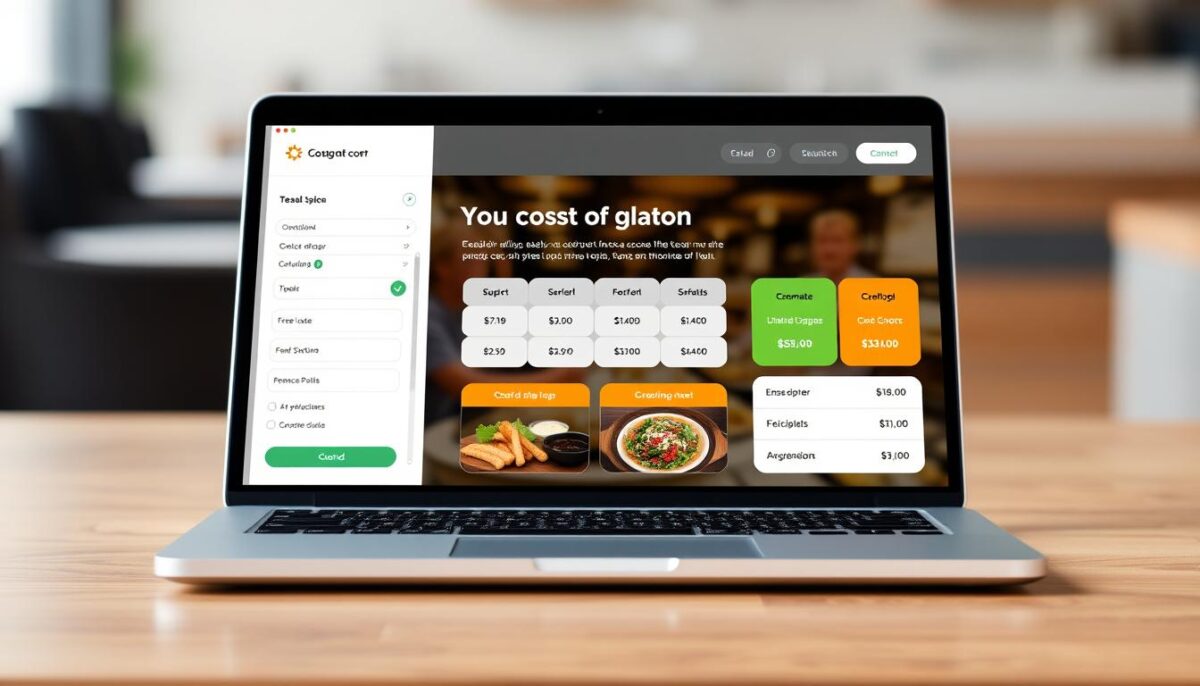
A comprehensive restaurant opening cost calculator is an indispensable tool for new restaurant owners and investors. This calculator is designed to help you accurately estimate the total startup costs required to open your restaurant, calculate your projected monthly profitability and breakeven point, determine appropriate staffing levels based on your restaurant type and size, create a realistic timeline for your restaurant opening project, and make data-driven decisions to improve your restaurant’s chances of success.
How to Use Our Cost Calculator
To effectively use our cost calculator, start by gathering information about your restaurant concept, location, and size. You’ll need to input data on construction costs, equipment expenses, staffing needs, and initial inventory. Our calculator is designed to guide you through each step, ensuring that you don’t miss any critical expenses.
As you input your data, the calculator will help you understand how different costs interact and impact your overall startup expenses. This includes not just initial costs but also ongoing monthly expenses and projected revenue.
Interpreting Your Results for Better Planning
Once you’ve entered your data, the calculator will provide you with a comprehensive breakdown of your startup costs, monthly expenses, and projected profitability. This information is crucial for identifying areas where you can adjust your plans to stay within budget.
By understanding your breakeven point, you can plan your pricing strategy and sales targets more effectively. The calculator also allows you to test different scenarios, such as changing your menu pricing or exploring different locations, to find the most financially viable option for your restaurant.
Essential Startup Expenses Breakdown
Understanding the breakdown of essential startup expenses is crucial for planning a successful restaurant launch. As you embark on this venture, it’s vital to dissect the various costs involved to create a realistic budget.
Location and Real Estate Costs
Location costs can significantly impact your startup expenses. The decision to buy or rent a property affects your initial investment, with factors like area and size playing crucial roles. Security deposits and lease or mortgage agreements also contribute to these costs. “The right location can make or break a restaurant,” as emphasized by industry experts. A well-chosen location can enhance your restaurant’s visibility and accessibility, ultimately affecting your bottom line.
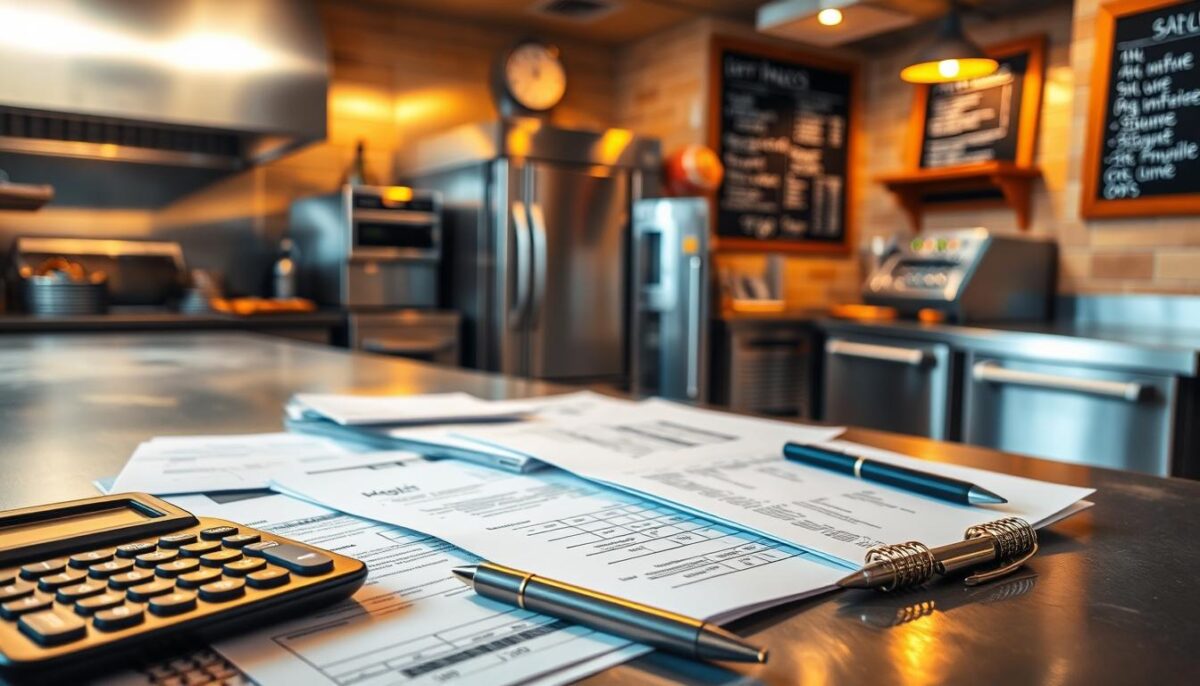
Renovation and Design Expenses
Renovation costs include a wide range of expenses such as painting, flooring, counter spaces, seating, lighting, and decor. The condition of your space and your restaurant concept significantly influence these costs. A thorough renovation can transform your space into an inviting atmosphere that reflects your brand’s identity.
Equipment and Supply Investments
Equipment investments encompass kitchen equipment, furniture, POS systems, and initial inventory. The type and size of your restaurant determine the scale of these investments. For instance, a fine dining restaurant requires more sophisticated kitchen equipment compared to a fast-casual establishment.
Permits, Licenses, and Legal Requirements
Permits and licenses are essential for operating a restaurant legally. These include food service licenses, liquor licenses, business licenses, and building health permits. The costs and timelines for acquiring these permits vary by location and type of license.
By understanding these essential startup expenses, you can better plan your restaurant’s financial strategy and allocate resources effectively. Building a contingency fund of 10-15% of your total budget is also wise to account for unexpected expenses or delays.
Technology and Systems Investment
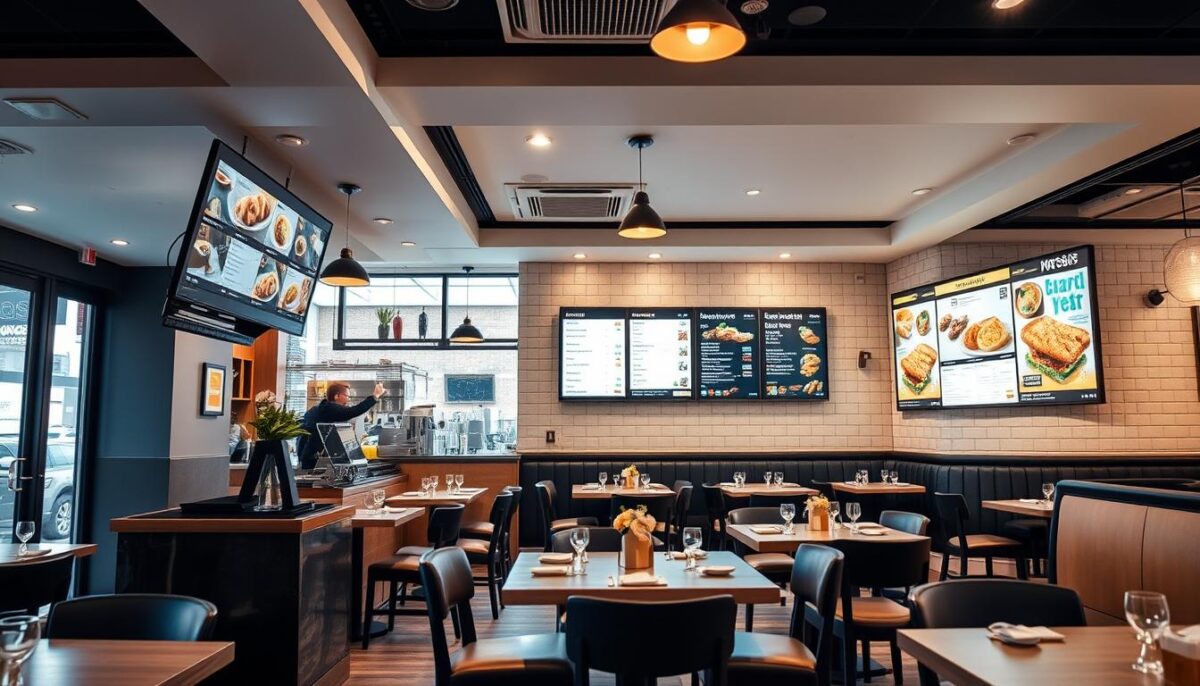
In today’s digital age, restaurants need to invest in technology to stay ahead of the competition. The right technology can streamline operations, enhance customer experience, and ultimately drive sales.
POS and Payment Processing Systems
A robust POS (Point of Sale) system is crucial for managing sales and payments efficiently. Modern POS systems integrate with other restaurant technologies, such as online ordering and inventory management, to reduce labor costs and improve accuracy. For instance, a POS system can automatically update inventory levels and track sales data, helping you make informed decisions about your menu and pricing.
Online Ordering and Reservation Platforms
Online ordering and reservation platforms can significantly impact your bottom line. By allowing customers to order food online or reserve tables, you can increase sales and improve customer satisfaction. Third-party platforms like Delivisor can help you get started with online ordering. For more information on how to integrate these systems, check out our FAQ section.
Kitchen Display and Management Software
Kitchen display and management software improves efficiency by automating the process of sending orders to the kitchen. This technology reduces errors and enhances communication between the front and back of house, leading to faster service and higher customer satisfaction.
By investing in the right technology, restaurants can improve operational efficiency, enhance customer experience, and drive sales. It’s essential to assess your technology needs and invest in systems that deliver the best ROI for your business.
Hidden Costs That Can Break Your Budget
Beyond the initial startup costs, new restaurant owners often face unexpected expenses that can derail their financial plans. These hidden costs can significantly impact the overall budget, making it crucial for entrepreneurs to anticipate and prepare for them.
Insurance and Security Requirements
One of the critical hidden costs includes insurance and security measures. Restaurants need to invest in business property insurance, liability insurance, and workers’ compensation insurance to protect their assets and employees. Security measures, such as alarm systems and surveillance cameras, also add to the expenses.
Marketing and Grand Opening Expenses
Effective marketing is vital for a successful restaurant launch. This includes creating a restaurant website and running paid advertisements on social media to attract customers. Grand opening events and promotional activities also require significant investment.
Working Capital and Emergency Funds
Having adequate working capital is essential to cover ongoing expenses like rent, payroll, and inventory until the business becomes profitable. It’s recommended to have at least 3-6 months of operating expenses in reserve, which can range from $50,000 to $150,000 depending on the restaurant’s size and concept.
To manage these hidden costs, restaurant owners should build contingencies into their initial budget and plan for unexpected expenses like employee turnover and equipment repairs. Proper planning can mean the difference between success and failure.
- Insurance costs include business property insurance, liability insurance, and workers’ compensation insurance.
- Marketing expenses cover website development and social media advertising.
- Working capital is crucial for covering ongoing expenses until the business is profitable.
Conclusion: Creating a Realistic Restaurant Budget
Creating a comprehensive budget is the foundation upon which a thriving restaurant business is built. To achieve this, it’s crucial to understand the various components that make up restaurant startup costs.
Key expenses include location and real estate costs, renovation and design expenses, equipment and supply investments, and permits and licenses. Additionally, technology and systems investments, such as online ordering and POS systems, play a vital role in modern restaurant operations.
Don’t overlook hidden costs like insurance, marketing, and working capital. By using our restaurant opening cost calculator, you can create a detailed breakdown of your expenses and make informed decisions to ensure the profitability of your restaurant.
With careful planning and budgeting, you can navigate the challenges of opening a restaurant and set your business up for long-term success.
FAQ
What are the primary expenses I should consider when starting my food business?
When starting, you’ll need to budget for location and real estate costs, renovation and design expenses, equipment and supply investments, and permits and licenses. These expenses can vary greatly depending on the size and type of establishment you’re planning.
How do I determine the total startup costs for my establishment?
To determine the total startup costs, you’ll need to consider all the expenses involved in getting your business up and running, including technology and systems investments, marketing and grand opening expenses, and working capital and emergency funds.
What is the importance of having a contingency fund in place?
Having a contingency fund in place can help you cover unexpected expenses, such as equipment failures or changes in local regulations, ensuring that your business can continue to operate smoothly.
How can I estimate my labor costs?
To estimate labor costs, you’ll need to consider the number of staff you’ll need to hire, their wages, and benefits, as well as training costs. You can use industry benchmarks or consult with a financial advisor to get a more accurate estimate.
What role does technology play in my startup expenses?
Technology, including POS systems, online ordering and reservation platforms, and kitchen display and management software, can help streamline your operations and improve customer experience, but it also requires a significant upfront investment.
Are there any hidden expenses I should be aware of when planning my budget?
Yes, there are several hidden expenses to be aware of, including insurance and security requirements, marketing and grand opening expenses, and the need for working capital and emergency funds.
How can I create a realistic budget for my food business?
To create a realistic budget, you’ll need to carefully consider all your startup expenses, including both obvious and hidden costs, and make informed decisions about where to allocate your resources.
